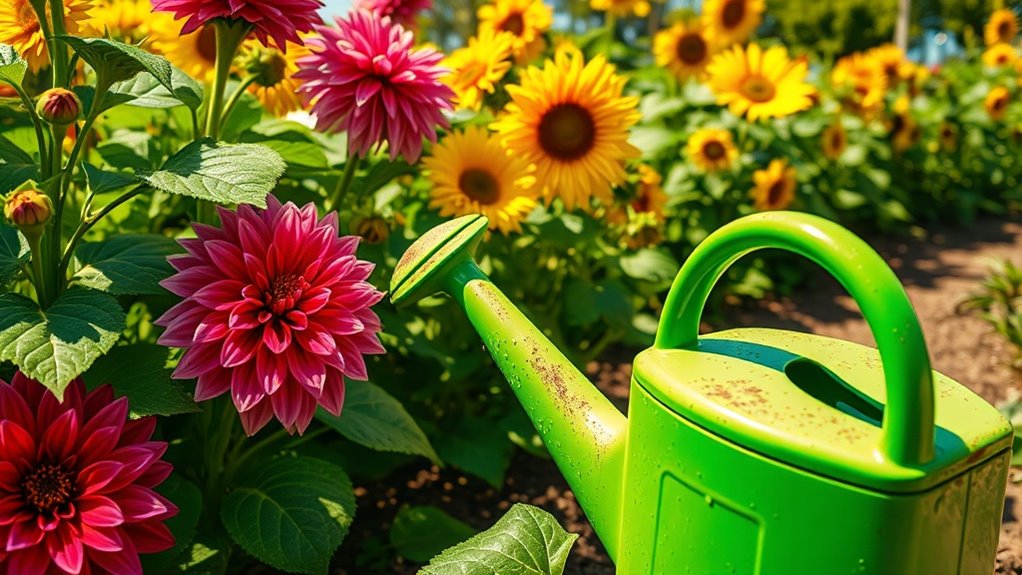What No One Tells You About Watering Your Garden
When it comes to watering your garden, it’s more complex than simply turning on the hose. You might not realize that understanding your soil’s moisture retention is key. Timing is equally important; watering too early or late can waste water and hinder plant growth. If you want to optimize your garden’s health and boost productivity, exploring the specifics of soil types, watering frequency, and techniques can reveal essential insights. What strategies could transform your approach?
Understanding Your Soil’s Moisture Needs
Understanding your soil’s moisture needs is crucial for maintaining a healthy garden, especially since different plants thrive in varying levels of moisture.
To establish an effective watering schedule, consider your soil type and its drainage capabilities. Sandy soils drain quickly and may require more frequent watering, while clay soils retain moisture longer.
Assess moisture levels often to adjust your schedule accordingly, ensuring optimal plant health. Additionally, correctly assessing moisture levels can help prevent issues such as overwatering or underwatering your plants.
Timing and Frequency: The Best Practices
Knowing your soil’s moisture needs lays the groundwork for effective garden management, but timing and frequency of watering are just as important.
Water early in the morning or late in the afternoon to reduce evaporation. Aim for deep, infrequent watering sessions about once or twice a week, depending on your soil type. This encourages strong root growth and maximizes water absorption for healthy plants. Additionally, maintaining a streamlined watering schedule can help busy gardeners efficiently manage their time while ensuring their plants thrive.
Techniques for Efficient Watering
How can you ensure your garden gets the right amount of water without wasting a single drop?
Utilize drip irrigation systems to deliver moisture directly to the roots, reducing evaporation.
Mulch your garden beds to retain soil moisture and minimize weeds.
Water during the early morning or late evening, when temperatures are cooler, preventing rapid evaporation and ensuring efficient absorption by plants.
Additionally, consider implementing a watering schedule to provide consistent moisture and adapt to your plants’ specific needs throughout the growing season.

